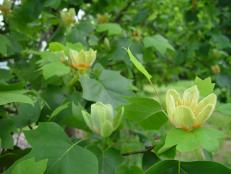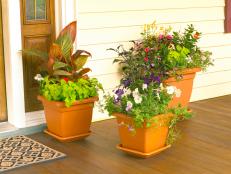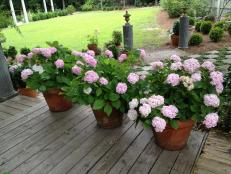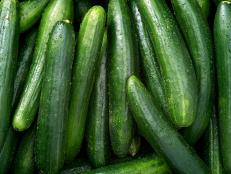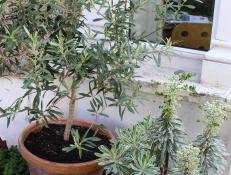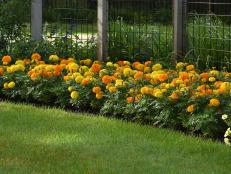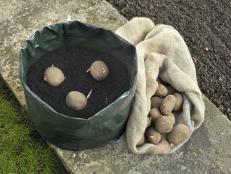Growing Citrus in Containers
Here are the basics on how to grow citrus fruit trees in containers.

Step 1: Select the Right Plants
Although any citrus tree can grow in a container, full sized grapefruit or orange trees may be hard pressed to survive many years even in a large container. Look for dwarf varieties of citrus, such as 'Improved Meyer' lemon, 'Bearss' lime, 'Kaffir' lime, kumquats, 'Trovita' orange, 'Calamondin' orange, and 'Buddha's Hand' orange for container growing. These tend to stay between 6 and 12 feet tall at maturity outdoors and can be kept even at a smaller height in a container. In cold areas the 'Improved Meyer' lemon, 'Calamondin' orange, and kumquats are good choices since they're most likely to fruit indoors.
Step 2: Select a Good Container
Start with a small container when planting a young citrus tree since it will be easier to maintain proper soil moisture than in a big container. If the soil stays too wet in a large container, the young tree with a small root system may rot and die. A new citrus tree will grow fine in an 8-inch diameter container to start. Two to three year old trees will need a 10 to 12 inch diameter container. Eventually, you'll need a 16 to 20 gallon container or one-half whiskey barrel-sized container for long term growth.
Select plastic, terra cotta, or wooden containers. Be sure they have adequate drainage holes. Plastic containers are the lightest weight and easiest to move in and outdoors with the seasons. However, the glazed terra cotta containers look more attractive when the plants are being grown indoors as houseplants.
Step 3: Select the Right Soil Mix
Citrus need well drained soil, so selecting the right potting mix is important. Commercial potting mixes with peat moss, perlite, vermiculite and compost are fine to use as long as the soil is light enough to drain water well. If your soil is still too heavy, try adding hardwood bark chips to the mix to increase the amount of air spaces.
Step 4: Potting Up the Tree
Place bare root trees in the container, gently packing in soil around the roots to remove air spaces. Plant so the citrus roots are just below the soil surface, but the crown is just above it. If transplanting an existing citrus tree into a larger container, remove the old tree and examine the roots. Cut off any dead, broken, and circling root and repot. Water well.
Step 5: Watering
Citrus prefer infrequent, deep watering as opposed to frequent shallow watering. Water when the soil is dry to 6 inches deep. If the leaves are wilting and perk up after watering, then you waited too long to water. If the leaves are yellowing and cup-shaped, and don't perk up after watering, then you have been overwatering. Usually once or twice a week is a good frequency to water, but adjust it based on the time of year and weather. Cool cloudy conditions in winter will necessitate less frequent watering than hot, sunny summer conditions.
Step 6: Fertilizing and Pruning
Fertilize in spring with a citrus plant food. Citrus need extra nitrogen, so look for formulations with double the nitrogen compared to phosphorous and potassium. If you can't find citrus plant food in your area, timed-released or organic fruit tree foods with micronutrients are good alternatives. These slow release products will feed the plant over time. If the leaves yellow and the watering is correct, supplement the granular fertilizers with occasional foliar sprays of fish emulsion.
Prune off any new shoots that arise from below the graft union. These are rootstock shoots and won't grow into the desired citrus variety. You can also remove thorns if you wish to make handling the tree easier. These will gradually diminish as the citrus tree ages. Prune for shape and balance in spring, removing errant or leggy branches.
Step 7: Pests
Control aphids, scale, and mealybug pests by hand picking them, dabbing mealybugs with cotton swabs dipped in rubbing alcohol, spraying insecticidal soap on aphids, and horticultural oil on scale.
Step 8: Winter Care
In cold winter areas, bring citrus indoors when temperatures dip into the 30Fs. Slowly transition the trees to the indoor/outdoor environment in spring and fall by bringing them in and out for one week. Place potted plants in a sunny south-facing window, reduce watering and consider placing a humidifier or other houseplants around to keep the humidity high during the dry months. In warm winter climates, protect trees left outdoors from the occasional frost with Christmas lights, blankets or burlap.






